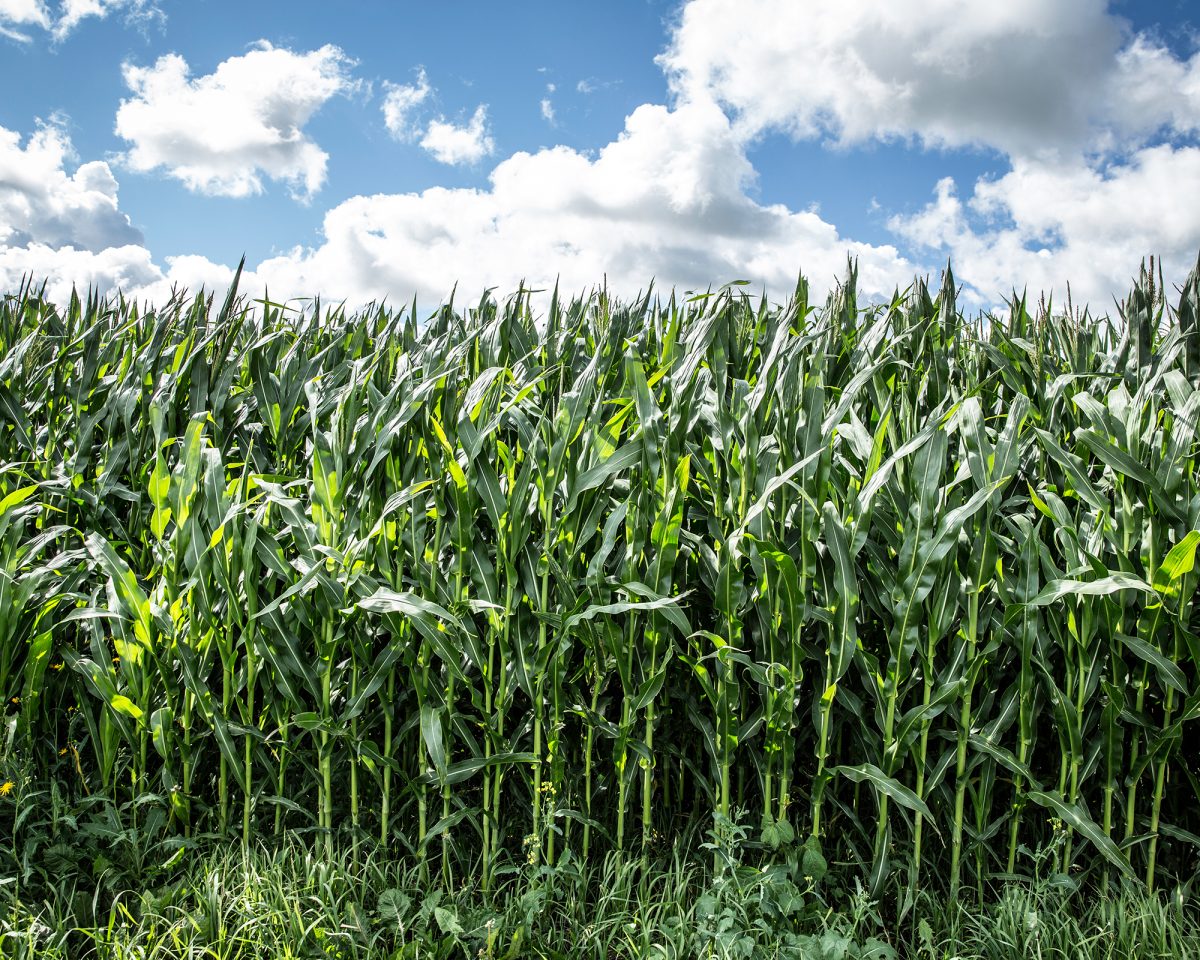
Cattle Country: Growing a more complete winter ration: corn intercropping in western Canada
The following article was written by E.J. McGeough and Y. Lawley, University of Manitoba. It was originally published in Cattle Country in February 2023.
Finding innovative ways to extend the grazing season in western Canada continues to be at the forefront of winter feeding for many cow-calf producers, particularly when challenged to “get more from less” from available lands for cattle grazing and feed production.
When it comes to extended grazing, corn offers many benefits. Plant breeding and research breakthroughs in the development of short season varieties over the past 10 years have allowed us to grow more corn per hectare than ever before in western Canada. Compared to perennial stockpile grazing for example, corn yields a large volume of feed per acre, allowing more production from a smaller land area. At the same time, corn also provides an effective wind break and abundant energy that helps cows through cold winter months. One key limitation of corn as a winter feeding strategy is its low crude protein content that results in an unbalanced energy: protein ratio. This can restrict the rate of liveweight gain, therefore limiting the suitability of this winter grazing system for not only cows (when under extreme cold conditions) but also growing cattle with high nutrient demands.
In a 1 year proof of concept study funded by BCRC, researchers at the University of Manitoba from the Departments of Plant Science (Dr. Yvonne Lawley) and Animal Science (Drs. Emma McGeough and Kim Ominski) investigated the initial feasibility of corn interseeded with five protein forages for fall/winter grazing western Canada. Corn on 30 inch row spacing was intercropped with Italian ryegrass, red clover, hairy vetch, grazing radish and a four way mix and seeded at Carman and Glenlea, Manitoba to test out this practice.
This initial work showed promise with the successful establishment of the intercrops with corn and crude protein concentration of the intercropped forages ranged from 13 (red clover) to 30% (grazing radish), demonstrating its potential for high nutritive value. Despite significant drought conditions, the presence of the intercrop did not negatively affect corn yield relative to the no intercrop control. However, persistence of drought conditions during the growing season did have an overall negative impact, with low intercrop and corn grain yields.
Despite these initial challenges, the team has since taken the intercropped corn idea further to evaluate strategies for combining high-energy corn with high protein forage species that lengthen the grazing season, reduce winter feed costs, while meeting animal nutritional requirements during winter conditions in western Canada. Partnering with beef and forage industry groups across the Prairies, the team has widened the scope to evaluate a wider range of agronomic practices (row spacing, seeding method, seeding timing) and include a Prairie wide evaluation of the agronomic and feed quality impacts of intercropping corn.
The new project currently underway, established a network of small plot experiments in 2022 of corn intercropped with Italian ryegrass, crimson clover, hairy vetch, grazing radish at seven sites across western Canada. This network included sites in Manitoba (Carman, Glenlea, Roblin, and Melita), Saskatchewan (Redvers) and Alberta (Lethbridge, Olds, Manning). Additional intensive evaluation of seeding timing (at planting vs V4), seeding method (drilled vs broadcast), and corn row spacing (30 vs 60 inch rows) is also ongoing at the University of Manitoba research stations near Carman and Glenlea.
Looking forward to 2023, a second year of small plot work will be carried out in addition to a large scale grazing trial at the University of Manitoba Glenlea Research Station. In this grazing trial, the most promising treatments from the small plot experiments will be selected for grazing of beef cattle in the winter. The research team will evaluate the feed value and yields of intercropped corn compared to grazing corn only. These novel practices will be evaluated using a range of animal measurements including liveweight gain, blood nitrogen, feed intake and enteric methane emissions from the cattle.
Key to the adoption of intercropped corn will be its costs of production compared to other extended grazing options, particularly as corn is a high input crop. Dr. Scott Jeffrey (University of Alberta) and Dr. Derek Brewin (University of Manitoba) will lead efforts on this front to evaluate its economic feasibility.
An important component of the project is the industry-led steering committee comprised of producers and agronomists from Manitoba, Alberta and Saskatchewan that bring a range of industry perspective to the science of evaluating these corn intercropping strategies. With growing interest in intercropping, crop-livestock integration, and regenerative agriculture, novel grazing strategies that will enhance the long-term resiliency, adaptability, competitiveness, and profitability of Canadian beef production are critical.
This project is funded by the NSERC Alliance Program, Alberta Beef Producers, the Beef Cattle Research Council and the Mitacs Accelerate Program. Project partners: Manitoba Beef Producers, Manitoba Forage and Grassland Association, Union Forage, Saskatchewan Forage Council, Saskatchewan Cattlemen’s Association.
Seed for this project was kindly donated by Union Forage and Bayer Crop Science.






